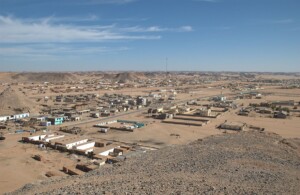Sudan’s southern states in severe water crisis
The water crisis in North Kordofan and Blue Nile states continue, with the price of a barrel of water rising from SDG400 to 600 in the past three days in the western neighbourhoods of El Obeid.
 Residents collect water in the western neighborhoods of El Obeid in North Kordofan (RD)
Residents collect water in the western neighborhoods of El Obeid in North Kordofan (RD)
The water crisis in North Kordofan and Blue Nile states continue, with the price of a barrel of water rising from SDG400 to 600 in the past three days in the western neighbourhoods of El Obeid.
Ahmed Rabah, from the Resistance Committees in western El Obeid, told Radio Dabanga that “the water crisis is not over.”
He explained that the committees lifted their sit-in on Wednesday after the state government secretariat promised to address the problem “within days.” So far, there has been no intervention to find emergency solutions.
Citizens are aggravated and suffering, said Rabah, especially given the onset of summertime. They have appealed to the state government to handle the issue before Ramadan begins on April 12.
In Blue Nile state, the area of Bout in Tadamon locality is witnessing a severe drinking water crisis. Izeldin Adam Suleiman told Radio Dabanga that the last pit, on which the residents of the area depend, is almost depleted.
Suleiman explained that the volume of water remaining in the pit does not meet the region’s needs for more than a week, and that the most capable residents of the region resorted to fetching water from the Wadabuk area, which takes about three hours to reach by car.
The Roseires dam that usually supplies water to the area collapsed last year and has not been fixed, said Suleiman, appealing to the authorities and the government to intervene urgently to save the area, in addition to speeding up the repair of the dam before the rains.
At the beginning of March, the Ministry of Irrigation announced that engineers are working to anticipate all possible scenarios resulting from the filling of the Grand Ethiopian Renaissance Dam (GERD), which lies at the source of the Blue Nile river in Ethiopia, to mitigate the expected negative effects when the dam begins to fill in June.











 and then
and then